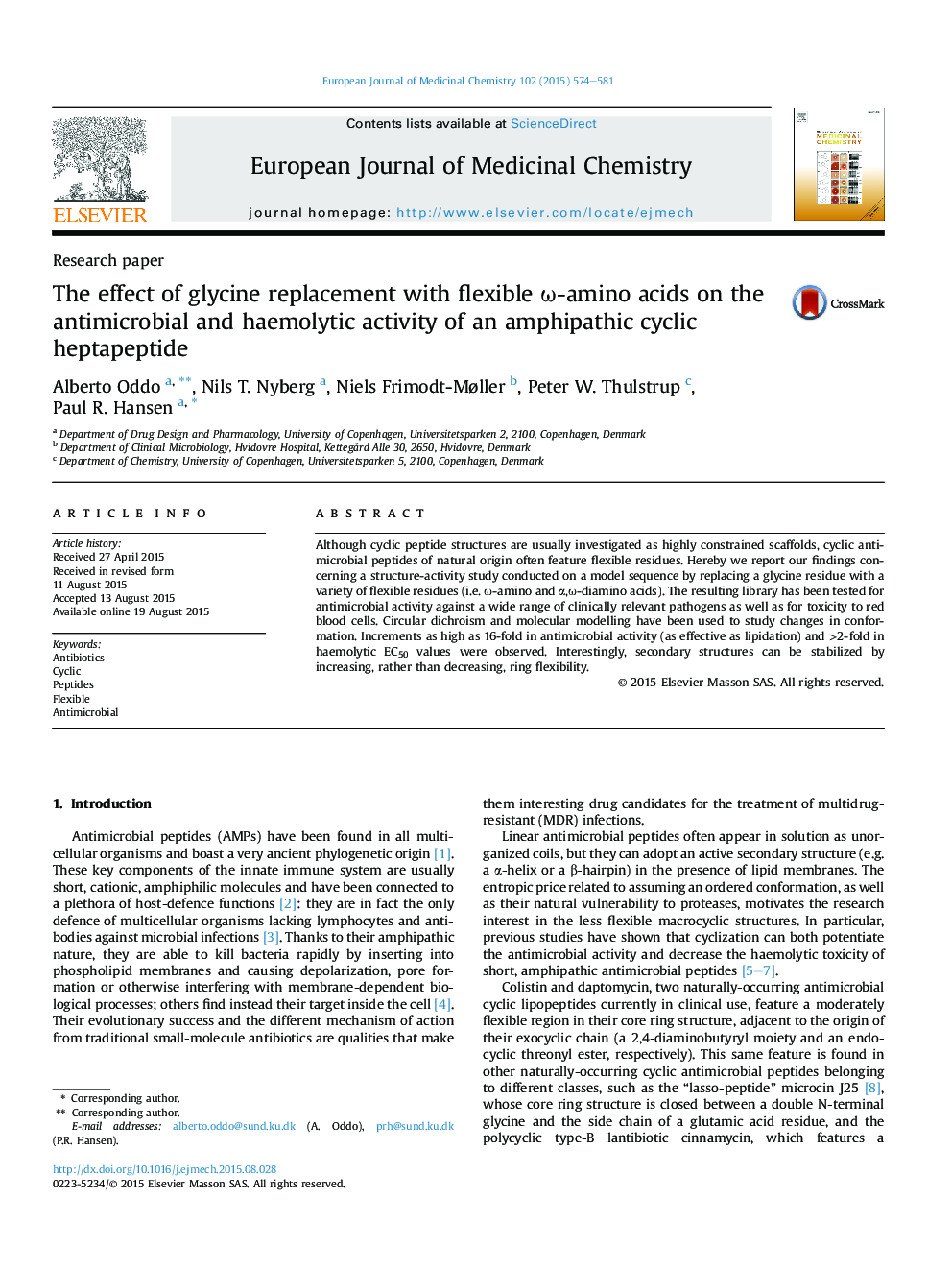| Article ID | Journal | Published Year | Pages | File Type |
|---|---|---|---|---|
| 1397258 | European Journal of Medicinal Chemistry | 2015 | 8 Pages |
•Cyclic antimicrobial peptides can benefit from a degree of localized flexibility.•Equal or better results than conventional optimization strategies.•Related to changes in the overall conformational/energetic landscape.•Important in the later stages of peptide-membrane rearrangements.
Although cyclic peptide structures are usually investigated as highly constrained scaffolds, cyclic antimicrobial peptides of natural origin often feature flexible residues. Hereby we report our findings concerning a structure-activity study conducted on a model sequence by replacing a glycine residue with a variety of flexible residues (i.e. ω-amino and α,ω-diamino acids). The resulting library has been tested for antimicrobial activity against a wide range of clinically relevant pathogens as well as for toxicity to red blood cells. Circular dichroism and molecular modelling have been used to study changes in conformation. Increments as high as 16-fold in antimicrobial activity (as effective as lipidation) and >2-fold in haemolytic EC50 values were observed. Interestingly, secondary structures can be stabilized by increasing, rather than decreasing, ring flexibility.
Graphical abstractFigure optionsDownload full-size imageDownload as PowerPoint slide
